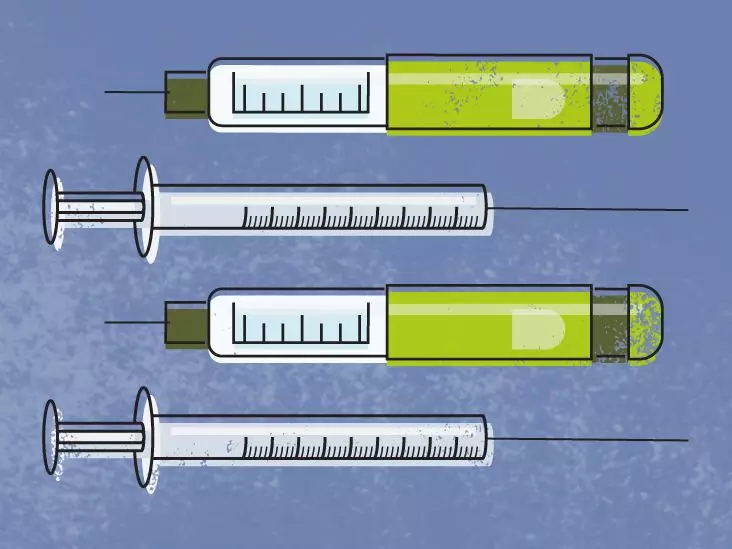In the realm of cancer treatment, one size does not fit all. The prescribed dosage of Opdivo Qvantig, a well-regarded immunotherapy drug, varies significantly based on the individual patient and the specific cancer type being addressed. This tailored approach is crucial, as the efficacy of treatment hinges on finding the optimal dosage. Factors influencing this decision also encompass whether Opdivo Qvantig is being used in conjunction with other therapies, particularly chemotherapy.
Patients must realize that the typical administration schedule for Opdivo Qvantig generally involves injections at intervals of two, three, or four weeks. This flexibility in timing doesn’t merely accommodate various cancer types; it also allows for patients’ unique responses to treatment, emphasizing the necessity of a personalized regimen. While standard dosages are established, the final call rests with the healthcare provider, ensuring that each patient’s treatment plan is customized to their specific condition.
Composition and Delivery Method
Opdivo Qvantig’s formulation reflects a sophisticated blend of medicinal components, specifically discontinuing in a single-use vial containing 600 mg of nivolumab and 10,000 units of hyaluronidase in a 5 mL solution. The micro-dosing—120 mg of nivolumab and 2,000 units of hyaluronidase per mL—speaks volumes about the careful consideration that has gone into developing this medication. Opdivo Qvantig is designed to tackle several aggressive cancers, including kidney, melanoma, lung, and bladder cancers, among others.
Interestingly, Opdivo Qvantig is administered through subcutaneous injection, a method that has become favorable due to its ease of use compared to intravenous delivery. This requires healthcare professionals to inject the medication under the skin of the abdomen or thigh. The efficiency of administering the drug in a mere three to five minutes cannot be understated, as it improves patient convenience and comfort. The potential for healthcare providers to make house calls for injections adds an appealing level of accessibility for patients struggling with mobility or those who prefer the comfort of their own homes.
Tailoring Dosages for Specific Cancers
The landscape of Opdivo Qvantig treatment reveals a detailed chart of recommended dosages that are closely correlated with different cancer types. For instance, the protocol for kidney cancer generally prescribes 600 mg/10,000 units every two weeks or a higher dosage of 1,200 mg/20,000 units every four weeks. Similarly, melanoma treatments follow the same dosage path, emphasizing a consistent framework for oncologists to employ.
Taking a closer look at non-small cell lung cancer (NSCLC), we see that the suggested dosages shift depending on whether surgical intervention is planned. For cases anticipating surgery, the recommended dosage skyrockets to 900 mg/15,000 units every three weeks for three doses, combined with chemotherapy. After surgery, the follow-up treatment involves a steady dosage of 1,200 mg/20,000 units every four weeks for up to one year. These intricacies illustrate the dynamic nature of cancer treatment protocols and highlight the vital role oncologists play in customizing patient care.
Managing Treatment Plans and Patient Expectations
As with any treatment regimen, patience is essential when using Opdivo Qvantig. This medication often takes time to demonstrate its efficacy, potentially slowing or halting cancer growth rather than providing instant results. Furthermore, it’s critical to recognize that not all tumors respond similarly, thereby necessitating ongoing assessments via tests or scans to monitor the treatment’s success.
Moreover, the duration of treatment is often extended, typically lasting up to one or two years, factoring in patient health and therapeutic outcomes. While some individuals may look forward to undergoing treatment for an extended period due to positive responses, it’s crucial to maintain open communication with healthcare providers to address any side effects or health concerns. These dialogues can lead to necessary adjustments in treatment duration or dosage, underscoring the collaborative nature of cancer care.
For anyone embarking on the journey of cancer treatment with Opdivo Qvantig, understanding the drug’s dosages, applications, and potential side effects enhances their engagement in the treatment process. Knowledge empowers patients to actively participate in decisions regarding their health and fosters a collaborative relationship with their healthcare providers. The complexity of cancer treatment can be daunting, yet with comprehensive insights into medications like Opdivo Qvantig, patients can navigate their journeys with greater confidence and clarity.

